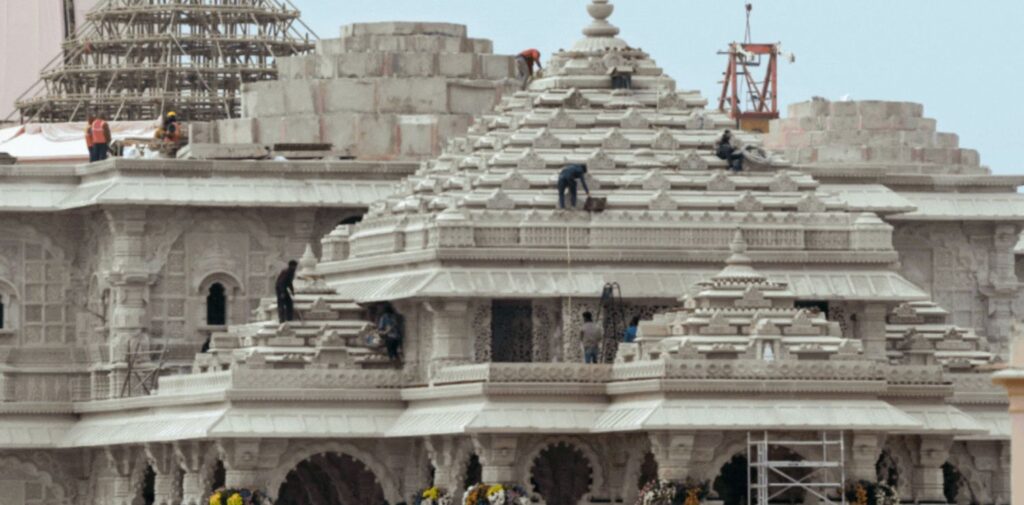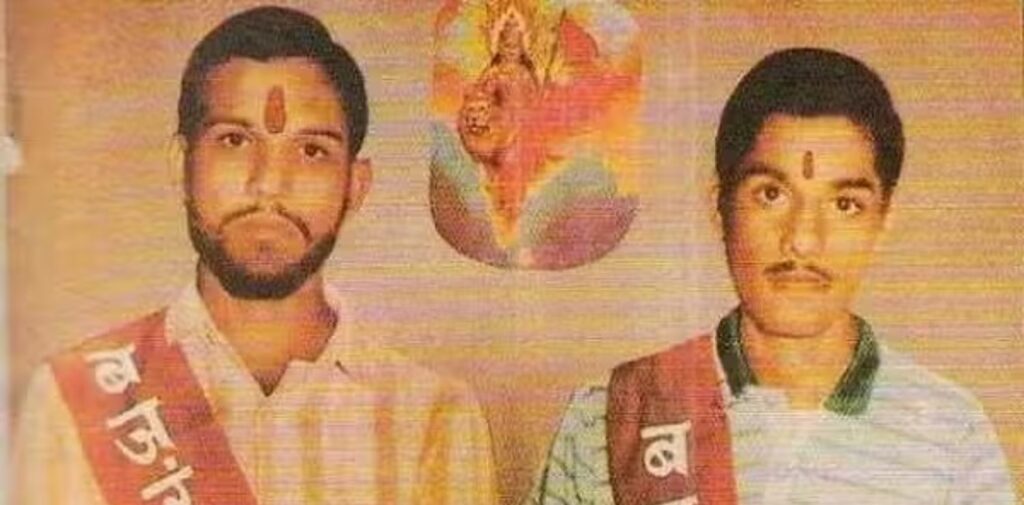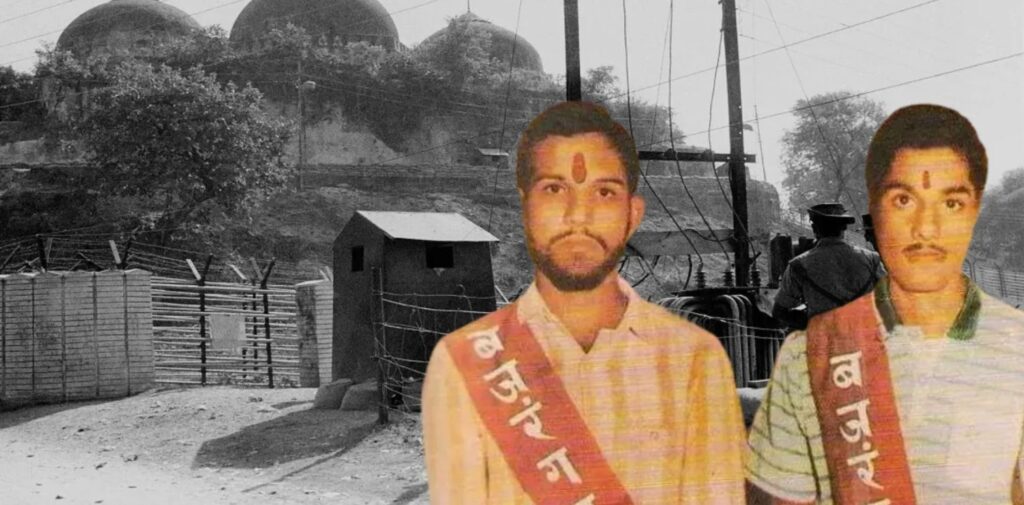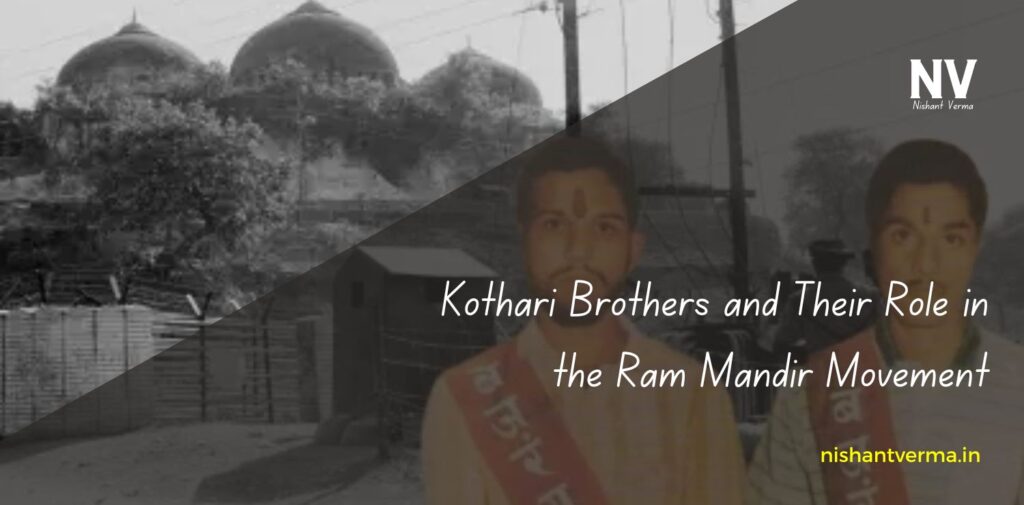The Kothari brothers, two young and passionate individuals, became symbols of sacrifice and dedication during one of the most pivotal moments in India’s history—the Ram Mandir movement. Their story is deeply intertwined with the struggle for the construction of the Ram Mandir at the disputed site of the Babri Masjid in Ayodhya, which ultimately led to the Babri Masjid’s demolition in 1992. Their tragic fate is often remembered as part of the 1990 Karsevak massacre, a tragic event that significantly shaped the political landscape of India.
Background: The Ram Mandir Movement
The Ram Mandir movement was a socio-political campaign that sought to construct a Hindu temple dedicated to Lord Ram at the site believed to be his birthplace, which was located in Ayodhya, Uttar Pradesh. The site, however, was home to the Babri Masjid, a mosque that had been built in 1528 by the Mughal Emperor Babur’s general, Mir Baqi. A belief in some sections of the Hindu community was that the mosque had been built over the ruins of a Hindu temple that marked the birthplace of Lord Ram.
The debate over the ownership of the site was long-standing, with legal and political ramifications. The issue intensified in the late 1980s and early 1990s when the Bharatiya Janata Party (BJP), led by figures like L.K. Advani, and the Vishwa Hindu Parishad (VHP) began to spearhead a nationwide campaign demanding the construction of the Ram Mandir at the Babri Masjid site. The movement gained momentum, and millions of Hindus joined the cause, including thousands of Karsevaks (volunteers), who marched to Ayodhya to participate in the construction of the Ram Mandir.

Kothari Brothers’ Involvement
The Kothari brothers—Ashok and Pradeep Kothari—were two young men from Kolkata who, along with many others, became deeply involved in the Ram Mandir movement. They were members of the VHP, and their commitment to the cause was not just ideological but deeply emotional as well. The brothers had a strong sense of duty and a belief that they were contributing to the revival of a centuries-old Hindu tradition.
On October 30, 1990, Ashok and Pradeep Kothari travelled to Ayodhya to join the mass of Karsevaks. At this time, the political atmosphere was extremely charged. The government had imposed restrictions, and tensions between Hindu and Muslim communities had escalated due to the demands for the Ram Mandir.

Tragic Incident of October 30, 1990
On that day, the Kothari brothers, along with other Karsevaks, had gathered in Ayodhya to participate in a peaceful march. However, the situation soon turned violent when they attempted to break through the security barricades set up by the government. The Uttar Pradesh Police, fearing the possible outbreak of violence, opened fire on the crowd of Karsevaks. In the ensuing chaos, dozens of Karsevaks were shot dead, including the Kothari brothers.
It is believed that Ashok and Pradeep Kothari were targeted by the police, who shot them in cold blood. Witnesses and supporters have stated that the brothers were not involved in any form of violence or aggression. Instead, they were participating in a peaceful protest, carrying out the instructions of the leaders of the Ram Mandir movement. The loss of the Kothari brothers was a blow not only to their family but also to the larger Hindu community that was fighting for the Ram Mandir.
The Aftermath and Impact on the Movement
The deaths of the Kothari brothers sent shockwaves across the nation. Their sacrifice became a rallying point for the Ram Mandir movement. Many saw them as martyrs who had given their lives for the cause of Hindutva and the construction of the Ram Mandir. The martyrdom of Ashok and Pradeep Kothari further inflamed the sentiments of Hindus across the country. Their deaths were seen as symbolic of the oppression and neglect faced by Hindus in their struggle to reclaim what they believed was rightfully theirs—the land of Lord Ram’s birthplace.
The Kothari family, particularly their sister, continued to honour the legacy of the brothers by dedicating themselves to the cause. In the years following their death, the family maintained a strong connection with the VHP and other Hindu organizations, keeping the flame of the Ram Mandir movement alive. The Kothari brothers’ names became synonymous with the martyrdom and sacrifice that defined the movement for many.
In the aftermath of the tragic deaths, the Kothari family was supported by fellow Karsevaks, political leaders, and the larger Hindu community. Their sacrifice was commemorated in several ways, from memorials to public tributes. Ashok and Pradeep Kothari’s death became one of the defining moments in the narrative of the Ram Mandir movement, which eventually led to the demolition of the Babri Masjid in 1992 and the eventual construction of the Ram Mandir.

The Legacy of the Kothari Brothers
The legacy of Ashok and Pradeep Kothari is one of sacrifice, patriotism, and unwavering devotion to the cause. Their story resonates with many who participated in the Ram Mandir movement, a movement that was not just about religion but about a larger cultural and political identity for millions of Hindus across India.
While their deaths were tragic, they left behind a powerful legacy. Ashok and Pradeep Kothari became symbols of the fight for religious rights and freedom. Their sacrifices were immortalized in the public memory, ensuring that the Kothari name would forever be associated with the Ram Mandir movement.
Today, their story continues to inspire many who advocate for the values and ideals they stood for. The family remains committed to their mission, continuing to honour their memory and uphold the ideals of the Ram Mandir movement.
Conclusion
The Kothari brothers, Ashok and Pradeep, tragically lost their lives in the 1990 Karsevak massacre, but their legacy endures. Their deaths were a stark reminder of the intensity of the Ram Mandir movement, a movement that saw the collision of religious fervour, political ambition, and historical grievances. The Kothari brothers’ ultimate sacrifice for the cause of the Ram Mandir has immortalized them as martyrs in the eyes of many.
Their story is not just about tragedy but about the power of faith, belief, and sacrifice. It is a testament to the determination of ordinary individuals who played a crucial role in shaping the course of India’s history. The Kothari brothers may no longer be with us, but their contribution to the Ram Mandir movement will never be forgotten.




